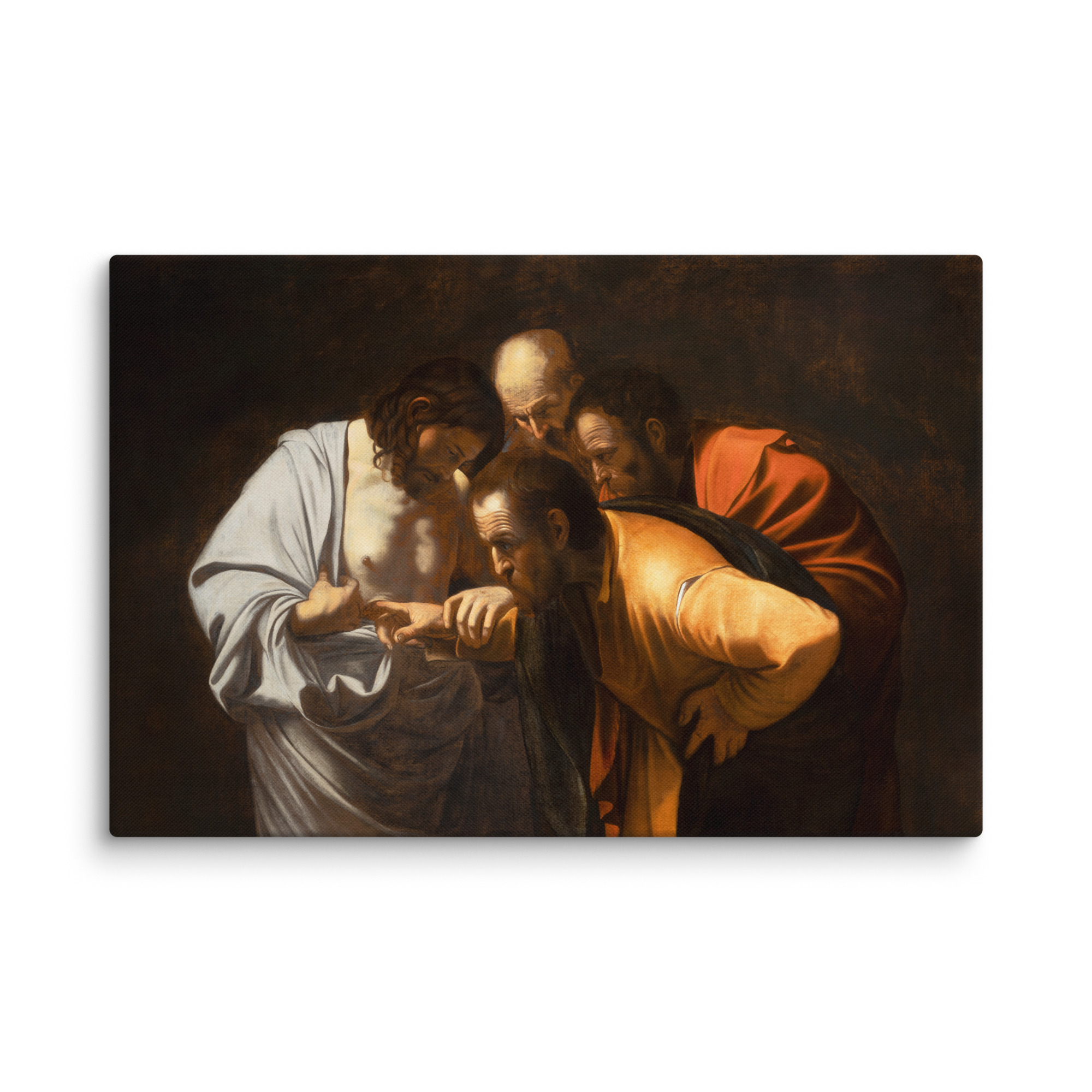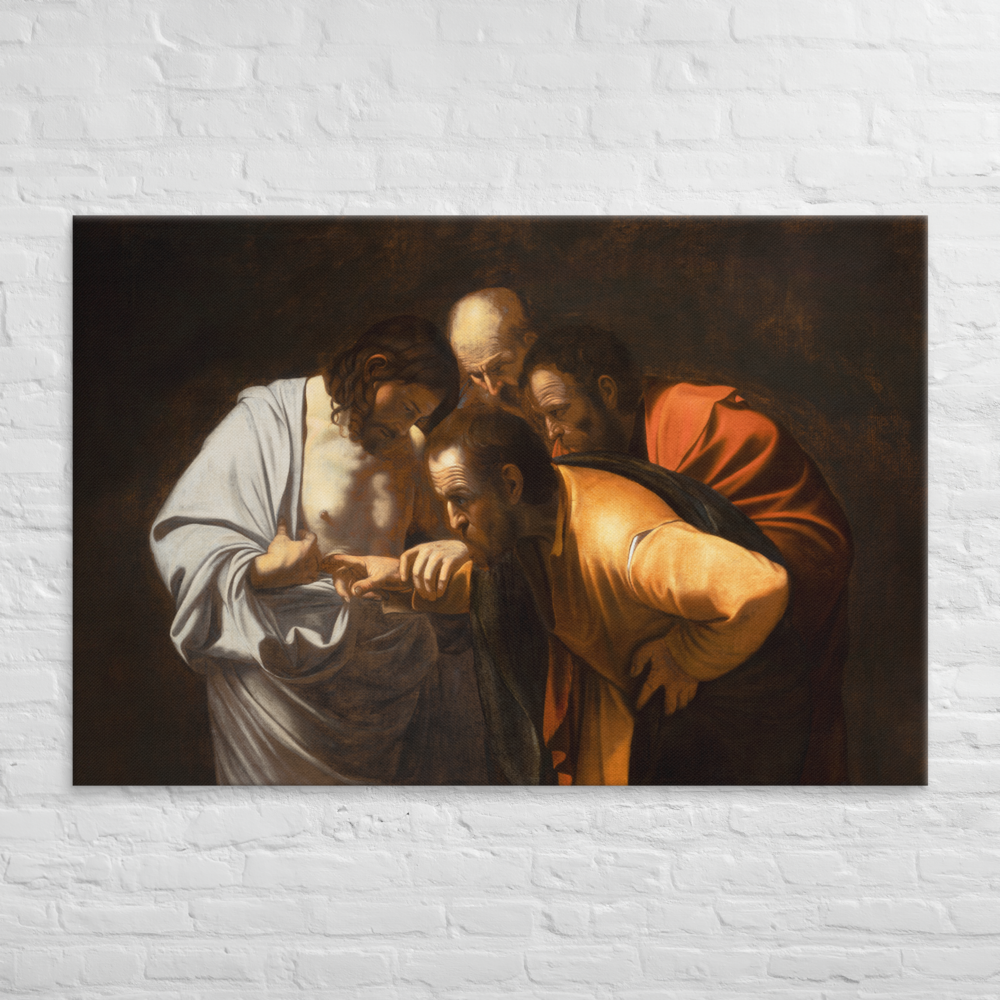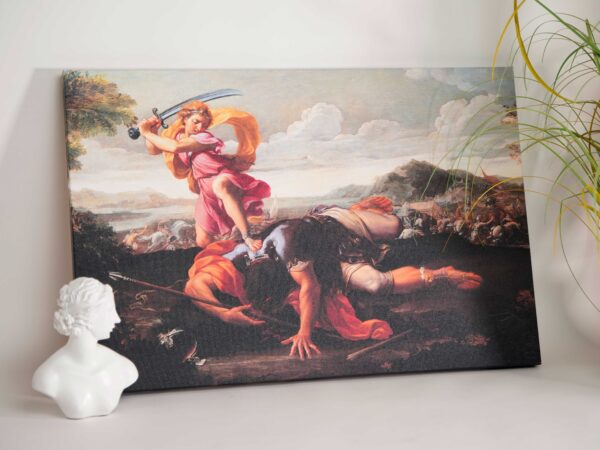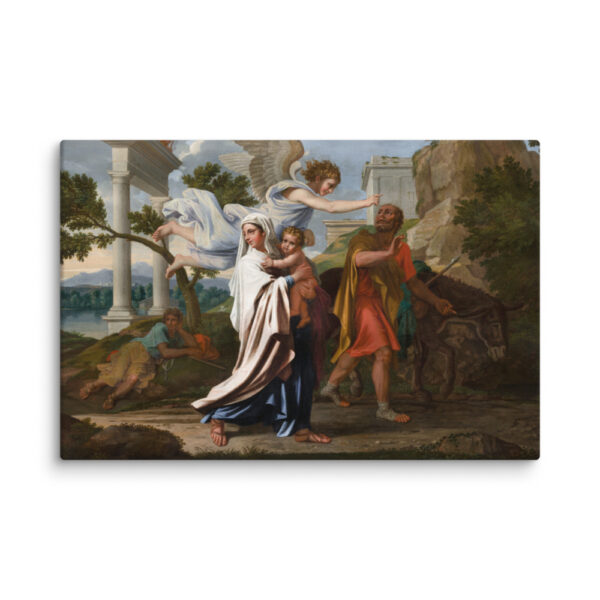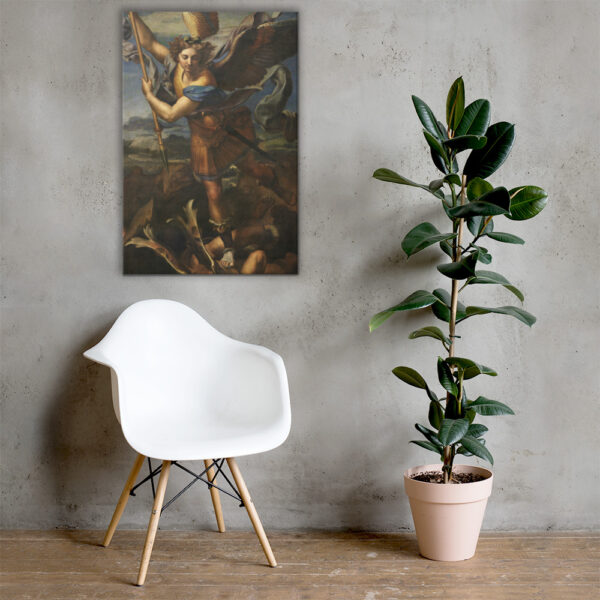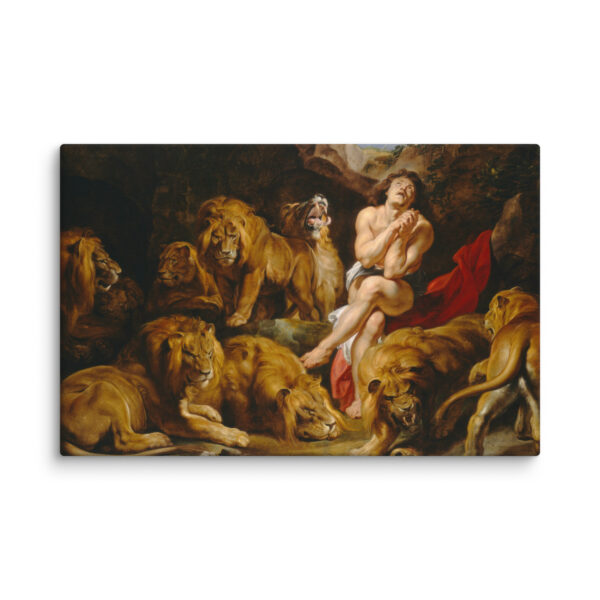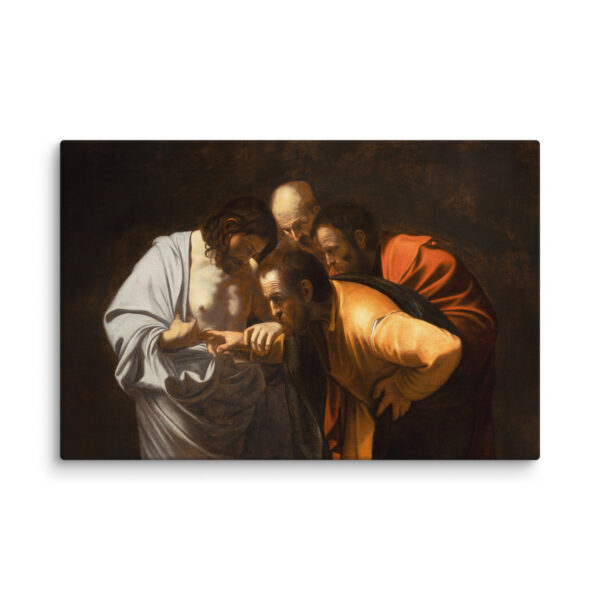The Incredulity of Saint Thomas
Price range: 44,00 € through 149,00 €
 Features
Features
Shipped with Mounting brackets
Rich details with crisp and sharp printing
The fabric does not fade easily
Printed on textured canvas (OBA-Free)
Hand-glued solid wood stretcher bars





The Doubting Thomas by Caravaggio: A Masterpiece of Faith and Realism on Fade-Resistant Canvas
Experience the powerful and evocative reprint of “The Incredulity of Saint Thomas” by Caravaggio, now available on high-quality, fade-resistant canvas. This remarkable artwork captures a pivotal moment of faith and doubt from the New Testament, bringing the scene to life with Caravaggio’s signature style of dramatic realism and vivid detail. Available in four different sizes, this canvas reprint is a perfect addition to any home or a meaningful gift for a loved one, inviting contemplation and reflection on the profound message it conveys.
The Biblical Account of Thomas
“The Incredulity of Saint Thomas” masterfully depicts the encounter between the resurrected Jesus Christ and the Apostle Thomas, a scene described in the Gospel of John, Chapter 20, verses 24-29:
“24 Now Thomas, one of the Twelve, was not with the disciples when Jesus came. 25 So the other disciples told him, “We have seen the Lord!” But he said to them, “Unless I see the nail marks in his hands and put my finger where the nails were, and put my hand into his side, I will not believe.” 26 A week later his disciples were in the house again, and Thomas was with them. Though the doors were locked, Jesus came and stood among them and said, “Peace be with you!” 27 Then he said to Thomas, “Put your finger here; see my hands. Reach out your hand and put it into my side. Stop doubting and believe.” 28 Thomas said to him, “My Lord and my God!” 29 Then Jesus told him, “Because you have seen me, you have believed; blessed are those who have not seen and yet have believed.”
Known as “Doubting Thomas,” the apostle expressed skepticism about Jesus’s resurrection, stating that he would not believe until he could see and touch the wounds inflicted during the crucifixion. In response, Jesus appeared to Thomas and invited him to place his finger in the wounds, leading to Thomas’s profound declaration of faith.
In this painting, Caravaggio captures the intense and intimate moment when Thomas reaches out to touch Jesus’s side. The expressions of awe and realization on the faces of the disciples, coupled with the tangible physicality of the scene, underscore the transformative power of faith. The painting speaks to the universal human experience of doubt and the journey towards belief, highlighting the blessings of those who believe without seeing.
Caravaggio’s Mastery in Depicting Human Emotion
Caravaggio, one of the most influential painters of the Baroque period, is celebrated for his groundbreaking approach to realism and his ability to convey deep human emotions through art. Born Michelangelo Merisi in 1571, Caravaggio’s work is characterized by dramatic use of light and shadow, known as chiaroscuro, which gives his paintings a striking, three-dimensional quality.
“The Incredulity of Saint Thomas,” painted around 1602, exemplifies Caravaggio’s skill in capturing the raw and visceral emotions of his subjects. The painting’s realism, down to the details of the apostles’ expressions and gestures, immerses viewers in the scene, making them witnesses to this pivotal moment of revelation and belief. Caravaggio’s ability to combine theological depth with a lifelike representation of human interaction makes this work a timeless exploration of faith and doubt.
Meaning and Significance of the Painting
The painting conveys a powerful message about the nature of faith. Thomas’s journey from doubt to belief mirrors the struggles that many individuals face in their spiritual lives. Jesus’s words to Thomas, “Because thou hast seen me, thou hast believed: blessed are they that have not seen and yet have believed,” resonate as a call to faith beyond empirical evidence. This moment highlights the grace extended to those who believe without physical proof, emphasizing the importance of trust and faith in the unseen.
Caravaggio’s depiction not only captures a historical religious event but also invites viewers to reflect on their own beliefs and the role of faith in their lives. The painting serves as a visual reminder of the transformative power of belief and the blessing that comes with it, regardless of the physical evidence.
High-Quality Reprint on Fade-Resistant Canvas
Our reprint of “The Incredulity of Saint Thomas” is meticulously produced on thick poly-cotton blend canvas, ensuring that the depth and vibrancy of Caravaggio’s original masterpiece are preserved. The use of a fade-resistant printing process guarantees that the vivid colors and intricate details of the artwork will remain pristine for years to come, providing a timeless addition to any space.
This canvas reprint is available in four different sizes, allowing you to choose the perfect fit for your home decor or as a thoughtful gift. Each reprint comes with a mounting bracket included, making it easy to display and enjoy this significant piece of Christian art in any room. The thick canvas material adds a luxurious texture and durability, enhancing the overall impact of the painting.
Perfect for Home Decor and Gifts
“The Incredulity of Saint Thomas” reprint is more than just a piece of art; it is a meaningful addition to your home that invites reflection and conversation about faith and belief. Its striking depiction of a critical moment in Christian history makes it a captivating focal point in any room, offering both aesthetic beauty and spiritual depth.
This reprint also makes an exceptional gift for friends, family, or anyone who appreciates the rich heritage of Christian art. Whether for a special occasion or as a gesture of faith and encouragement, this artwork is sure to be cherished and valued for its profound message and exquisite quality.
About Caravaggio and His Era
Caravaggio, whose full name was Michelangelo Merisi da Caravaggio, was a revolutionary Italian painter whose works had a profound impact on the art world during the late 16th and early 17th centuries. Born in 1571, Caravaggio’s innovative approach to painting challenged traditional techniques and introduced a new level of realism and emotional intensity to religious and mythological scenes.
Living during a time of significant religious upheaval and artistic experimentation, Caravaggio’s work reflects the Baroque era’s emphasis on drama, emotion, and the interplay of light and shadow. His paintings often featured ordinary people in divine contexts, humanizing sacred events and making them more accessible to viewers. Caravaggio’s legacy endures as one of the most important figures in Western art, with his influence evident in the works of countless artists who followed.
Caravaggio
Michelangelo Merisi da Caravaggio, often simply known as Caravaggio, revolutionized art in the late 16th and early 17th centuries with his dramatic use of light and shadow and his intensely realistic depictions of human figures. Born in 1571, Caravaggio's work broke from the idealized forms of the Renaissance, embracing a raw, unflinching naturalism that brought an unprecedented emotional depth to his subjects. His paintings, such as "The Calling of Saint Matthew," "Judith Beheading Holofernes," and "The Supper at Emmaus," are renowned for their striking chiaroscuro and powerful narratives that capture the viewer's attention with their dramatic contrasts and lifelike realism. Caravaggio's innovative approach not only earned him critical acclaim but also controversy, as his provocative use of common people as models for saints and his intense, often violent imagery challenged the conventions of his time. Despite a turbulent life marked by legal troubles and a notorious temper, Caravaggio's influence on the art world was profound. He paved the way for the Baroque movement, inspiring countless artists with his bold techniques and compelling compositions. Today, Caravaggio's works continue to captivate audiences worldwide, celebrated for their revolutionary impact and enduring emotional resonance.
More Paintings